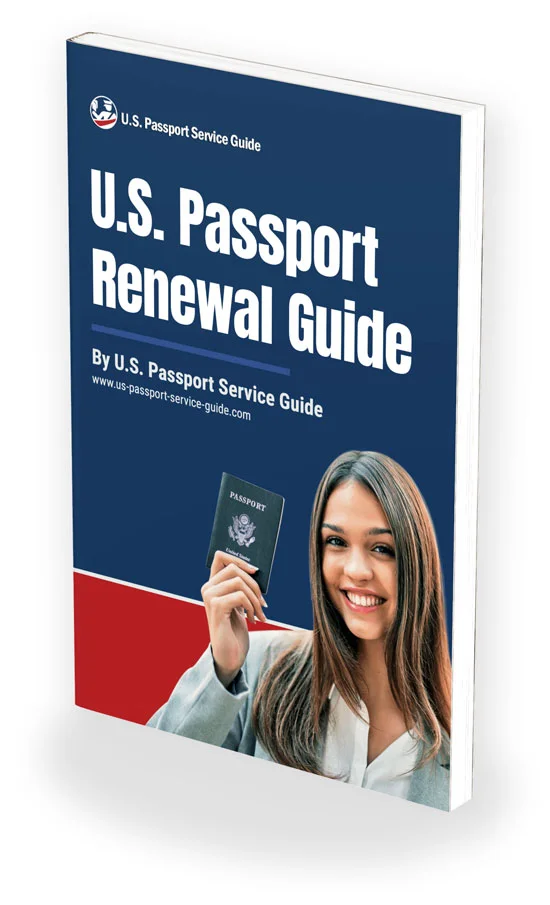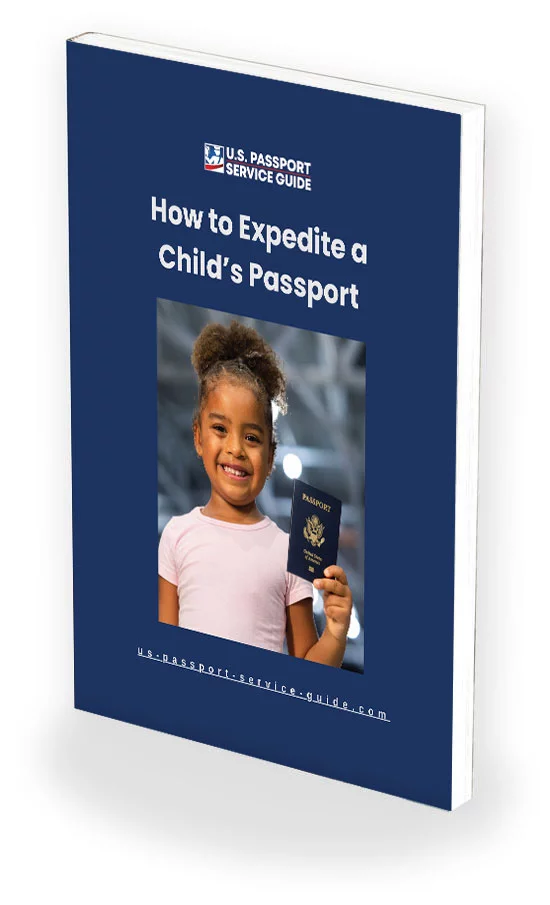Frequent travel can expose your passport to a variety of climates and conditions that can cause the pages of your passport to get stuck together. So can improper storage, melted candy, errant stickers, or “crafty” children.
In our over 20 years of experience helping readers like you with their passport issues, we have heard all kinds of sticky passport disaster stories. That said, there are also plenty of success stories about passports that have been restored to a useful state.
Regardless of how it happens, if one or more of the pages in your passport stick together, your passport may be considered “significantly damaged.” This means it is invalid for international travel and personal identification.
At this point you have two options:
- Apply for a new passport. When your passport has significant damage, you need to get a new one. Follow our comprehensive guide to replace a damaged passport.
- Try to separate the stuck pages yourself. Depending on how stuck your pages are, why they are stuck, and how many pages are involved, there are several ways you may be able to get your passport back to a usable condition. Of course, if you are unsuccessful, you are back to having to apply for a new passport.
In this guide, we unpack the most helpful techniques for handling this sticky situation.
Determine How and Why Your Passport Pages Are Stuck
The first step in separating your sticky passport pages is diagnosing how and why your passport pages got stuck together in the first place.
Understanding What Passport Pages Are Made of
The current Next Generation Passport is made using a combination of special materials to enhance its durability and security.
The pages inside a passport contain a polycarbonate data page; this page contains the passport holder’s personal details and photo, the material is a hard, plastic-like material. The rest of the passport contains several blank pages; these pages are typically made from a special type of paper designed to receive stamps and visas from destination countries. The paper is often watermarked as an additional security feature.
What Could Cause Passport Pages to Stick Together?
Several factors can lead to the pages of a passport getting stuck together. The most common are:
- Humidity: When a passport is exposed to moisture or high humidity, such as being left in a damp location or getting caught in the rain, the pages can quickly adhere to each other. This can also lead to mold issues.
- Compression: Storing a passport under heavy items or in a confined space can result in pressure that causes the pages to stick together.
- Sticky Substances: Contact with adhesive materials like food, drink, glue, or certain inks can cause the pages of a passport to bond together.
- High Temperatures: Exposure to heat can lead passport pages to warp or adhere.
To avoid these issues, it’s crucial to handle passports with care, pack and carry passports appropriately while traveling, and store passports properly when not in use.
Techniques for Carefully Separating Passport Pages
Separating stuck passport pages can be a delicate task. If you get it wrong, your only option is to apply for a replacement.
Be sure to read through each of these separation methods and choose the one that most closely fits the issue causing your passport pages to stick together.
A Word of Caution:
The methods listed below should always be used with caution. These techniques are not guaranteed to work for every circumstance. It is up to you to assess the severity of your passport’s issue and determine which, if any, of these methods is the most likely to remedy your specific situation.
If you are uncertain of whether or not you should attempt a repair, consider visiting a passport office or contacting a professional passport expediting service near you for specific guidance.
Ultimately, your passport is in a state that is already damaged and likely to be invalid. These are techniques designed as a last resort to try and salvage your passport and avoid replacement.
1. The Manual Separation Method
Very lightly wet the bonded pages of your passport. Use a thin tool like a spatula or the dull side of a butter knife to slowly and gently go around the edges of the pages. Apply gentle pressure to the center of the pages while you separate each set of pages.
Once you’ve successfully separated the pages, leave the passport in a safe and dry location until the passport pages are completely dry.
Don’t oversaturate your passport. If the ink runs or smudges (particularly on the data page) you may have a passport that is too damaged for use.
2. The Freezer Approach
Place your passport in a freezer-safe plastic bag and seal it. Allow the passport to freeze for about an hour. The cold temperature prompts the formation of ice crystals between the pages, which can then be gently separated using tweezers.
If you encounter resistance, put your passport back in the freezer, wait for a few more hours, and continue to work the pages apart. Repeat this process as many times as you need to.
If at any point, you are no longer making progress, it is probably time to move on to another approach.
Successful or not, be sure to allow the passport to completely dry in a safe, climate-controlled location.
3. The Steam Solution
This method can be used with either a handheld laundry steamer (on the lowest setting), a tea kettle, or a small pot of boiling water. In any case, be especially careful when using this method as steam can potentially cause burns or further damage to your passport, especially if not done with caution.
Hold the passport’s stuck-together pages over the flow of steam while protecting the rest of the passport with a towel. Then, attempt to carefully pry the bonded pages apart with a spatula or the dull side of a butter knife. Repeat this process until the pages are apart.
After the pages have separated, leave the passport to dry in a safe, moisture-free area until it has dried completely.
4. The Ironing Technique
For this method, you use a warm iron and a cotton cloth. Place the cloth between the passport and the iron to protect the paper. Using the lowest setting (without steam), gently move the iron over the cloth in long strokes. Do not let the iron sit on top of the passport, keep the iron moving. The heat should work to loosen the adhesive causing the pages of the passport to stick together.
Be patient! Resist the urge to crank up the heat or apply excessive pressure. Each of these could wind up causing more harm to your already damaged passport.
5. The Hairdryer and Sponge Approach
This technique uses a hair dryer on its coolest setting to gently warm the stuck pages of the passport. A damp sponge can also be used in conjunction with the hair dryer. The combination of heat and moisture should help separate the papers.
If you use this method with the sponge, make sure that you allow the passport to dry completely in a safe, climate-controlled location.
6. The Heat Gun Method
Similar to the hairdryer approach, a heat gun can provide a concentrated heat source that can unfasten stuck passport pages without damage. However, this method should be used with extreme caution as heat guns can get very hot, causing burns or further damage to your passport if not used properly.
We would not recommend attempting this method unless you have already tried milder heat-related techniques like the hairdryer or iron first.
7. The Rubbing Alcohol Solution
Lightly dampen a cotton ball with rubbing alcohol will and gently rub it over the surface of the stuck pages of your passport. The alcohol can help dissolve the adhesive causing the papers to stick together.
Be aware, the higher the concentration of the rubbing alcohol, the more intense its cleaning powers become. Always start with lower concentrations, like 60%, to avoid unintended damage.
Once you have separated the pages, be sure to give our passport time to completely dry in a safe, dry area. Rubbing alcohol evaporates much more quickly than water, so drying time should be shorter than other methods.
8. The Solvent Technique
Chemical solvents can effectively remove adhesives and glue from paper. For this method, wear a pair of gloves to protect your skin. Lightly dampen a cotton ball with the adhesive solvent and gently rub it over the surface of the bonded pages. Be sure to use caution when using solvents as they can potentially cause more damage to your passport.
Allow your passport to dry completely in a safe area that is free of humidity.
My Passport is Beyond Repair, What Should I Do?
Understand that there are instances when passports are damaged beyond repair. Again, a damaged passport is instantly invalid and not usable for international travel or identification purposes. You’ll need to replace it.
If you need a new passport, follow our Complete Damaged Passport Replacement Guide for step-by-step advice and helpful tips.
Don’t have time to wait? Not sure what your best course of action is? We recommend getting help from a registered passport expediting service. These travel document professionals can help you diagnose your issue and guide you through the entire process of getting a new passport fast.
Even if you are traveling soon, an expediter can ensure you follow all the right steps, complete the right forms, and get the perfect passport photo so that you don’t have to cancel or reschedule your travel plans. Check out our directory of the top passport expediting services, including our top recommendations for more information.
Good Luck with Your Sticky Situation
The rigors of international travel can often subject your passport to some pretty harsh conditions. Some of them can lead to your passport pages sticking together.
While the techniques above can help you to carefully separate bonded passport pages, it’s crucial to approach this task with extreme caution. If you’re uncertain about the condition of your passport or if it’s damaged beyond repair, it’s always best to consult with a professional. Remember, a damaged passport is not valid for international travel or identification, and a replacement is absolutely necessary in such cases.
Whether you successfully save your stuck passport or not, be sure to learn the lesson. Always handle, carry, and store your passports with care to prevent future damage.








